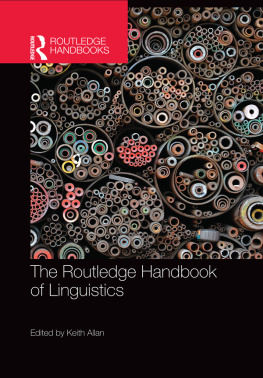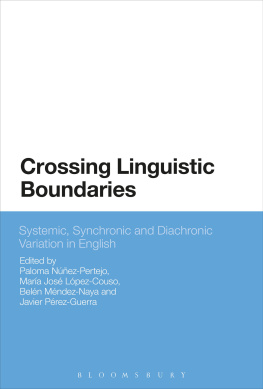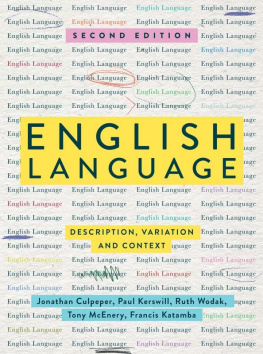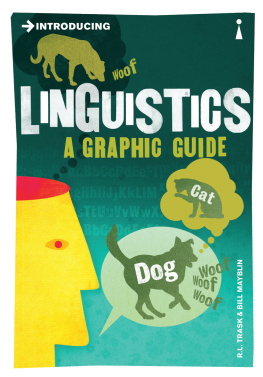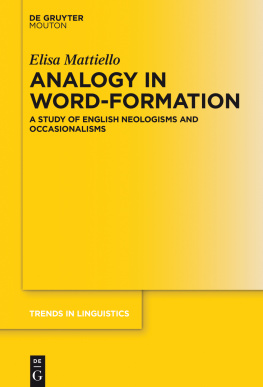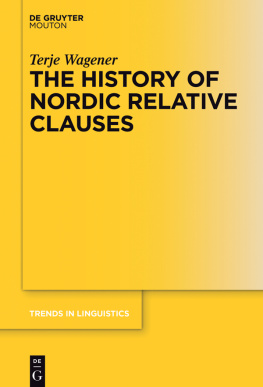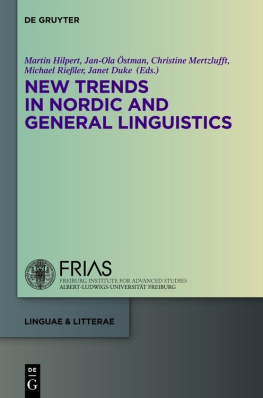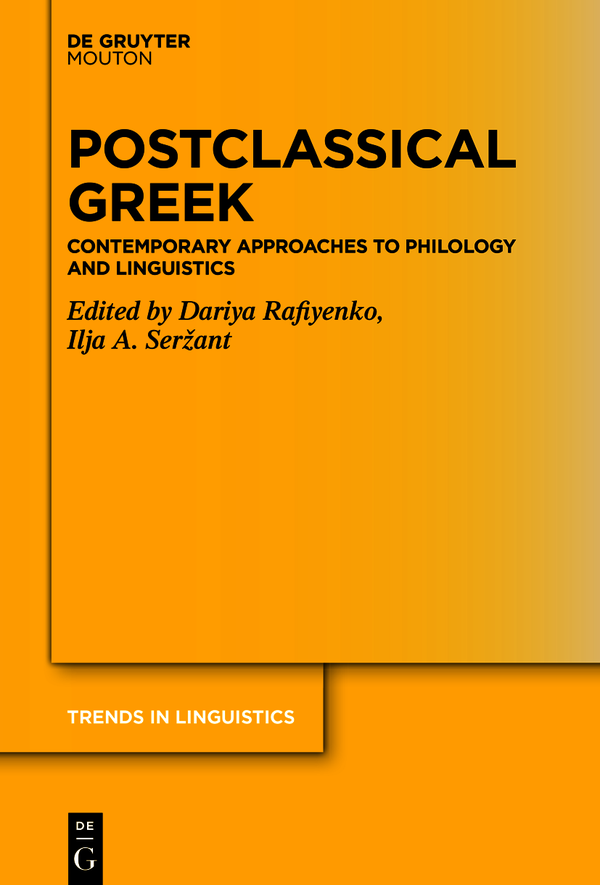Trends in Linguistics. Studies and Monographs [TiLSM]
Edited by
Chiara Gianollo
Danil Van Olmen
Walter Bisang
Tine Breban
Volker Gast
Hans Henrich Hock
Karen Lahousse
Natalia Levshina
Caterina Mauri
Heiko Narrog
Salvador Pons
Niina Ning Zhang
Amir Zeldes
Volume
ISBN 9783110676723
e-ISBN (PDF) 9783110677522
e-ISBN (EPUB) 9783110677614
Bibliographic information published by the Deutsche Nationalbibliothek
The Deutsche Nationalbibliothek lists this publication in the Deutsche Nationalbibliografie; detailed bibliographic data are available on the Internet at http://dnb.dnb.de.
2020 Walter de Gruyter GmbH, Berlin/Boston
Acknowledgements
Our first thanks goes to the reviewers of this volume: Klaas Bentein, Giuseppe Celano, Robert Crellin, Eystein Dahl, Sonja Dahlgren, Chiara Gianollo, Dag Haug, Geoffrey Horrocks, Patrick James, Brian Joseph, Daniel Klligan, Martti Leiwo, Amalia Moser, Joanne Stolk and the anonymous reviewer of the entire volume.
We also cordially thank Ludwig Maisel and Oneg Ben Dror for investing so much time into formatting and harmonising the volume. Without their help we would have failed.
We thank the authors for their contributions, their patience and cooperation.
Finally, the support of the European Research Council (ERC Advanced Grant 670985, Grammatical Universals) is gratefully acknowledged.
Postclassical Greek. An Overview
Dariya Rafiyenko
Ilja A. Serant
Abstract
This paper summarizes the major linguistic properties of Postclassical Greek that are distinct from Classical Greek. It discusses innovations in phonetics, morphology and syntax and gives an overview over diatopic and diastratic variation observed across different periods of Postclassical Greek.
Keywords: Grammar of Postclassical Greek, variation, language change,
Postclassical Greek
Greek is one of the few languages in the world with a continuous written (including literary) tradition spanning more than three millennia: virtually all periods of this language are well-documented by large numbers of texts. While the Archaic and Classical periods have received most of the scholarly attention for centuries (for a synoptic overview see Giannakis, ed., 2014; Bakker, ed., 2010), much less attention has been paid to the Greek of later periods, that is to Postclassical Greek (cf., inter alia,
This period starts with the rise of the Koin during the spread of Hellenism in the period of Macedonian imperialism and subsumes the later Roman and Byzantine periods. Unfortunately, we do not have a well-defined set of linguistic criteria for chronological periodization (e.g. contrasts the three periodizations that are most widely adopted in the literature, and that differ from each other only in minor ways.
Table 1: Periodization of Postclassical Greek: an overview.
| | Horrocks 2010 | Holton & Manolessou 2010 |
|---|
| 323 BC 31 BC | Hellenistic and Roman period (4th c. BC 6th c. AD) | Hellenistic period |
| 31 BC 330 AD | Roman period |
| 330 AD 527 AD | Byzantium (Early, Middle and Late Byzantine periods) |
| 527 AD 1100 AD | Early Middle Ages
(6th c. 1100) | Early Medieval Greek
(5001100) |
| 1100 AD 1453 AD | Later Middle Ages (11001453) | Late Medieval Greek
(11001500) |
During the Hellenistic period, the Koin (h koin dilektos the common speech) developed on the basis of the spoken and written variety of Attic Greek of that time and became the lingua franca this is sometimes referred to as international Attic (Eideneier 1999: 535) or expanded Attic especially in the : 21; cf. Garca Ramn, this volume).
This new common language, the Koin, started developing different registers, most prominently its official variant at the Hellenistic chancelleries. Moreover, the literary Koin started emerging during the late Hellenistic and Roman periods as an artistically developed version of the Koin employed by the Hellenistic/Roman bureaucracies (Horrocks 2010: 97). From the end of the 1st c. BC, authors were increasingly influenced by the ideals of Classical Attic, which they sought to imitate by reviving a number of grammatical and lexical properties of the classical language a movement often referred to as Atticism (Schmid 18871897, : 47; Benedetti, this volume), etc. Generally, the form itself has become more representative of the high register than the grammatically correct usage thereof.
The Atticist movement was so pervasive that it exercised an impact not only on the literary language of prose writers but also on colloquial registers. Some Atticistic features penetrated into the language of less educated ). For example, Tronci (this volume) finds traces of Atticism in the use of the future tense forms. Finally, Byzantine Greek still preserves a number of properties (re-)introduced into the literary language by Atticism (cf. Lavidas & Haug, this volume) because the Greek elite continued to use Atticised Greek to indicate their class membership and only sometimes wrote in less elevated registers for practical purposes. It is also during this period that we observe the spread of vernacular literature (cf. Horrocks 2010: 325369).
Thus, despite being the common language, the Koin underwent considerable diastratic differentiation very early on. Moreover, in addition to the diastratic variation, diatopic variation reveals itself as another important dimension of diversification. The diatopic variation was caused by two distinct types of substrata: the ancient Greek dialects in the Greek homeland and Asia Minor as well as by genealogically unrelated substrata. While the ancient dialects disappeared from the written record with the rise of the Attic-based Koin, the latter becomes again subject to dialectal diversification, where some features of the ancient dialects survive (: 51; Garca Ramn, this volume).
Above we discussed the variation motivated by internal factors such as diversification into dialects or language change that affects different registers to different degrees and leads to hypercorrect forms in the language of the conservative elite. In addition, as a result of the immense expansion of Greek-speaking territory by Alexander the Great, Postclassical Greek was subjected to many more external influences. Certainly, the Greek-Coptic language contact is the best attested instance of language contact in antiquity (Grossman et al., eds., 2017). While Coptic not only borrowed lexical elements including verbs and adjectives but also grammatical items from Greek (see various papers in Grossman et al., eds., 2017), there is also evidence for the reverse direction: the emergence of Egyptian or Papyri Greek as a local variety with its own characteristics originally due to imperfect learning. As Dahlgren & Leiwo (this volume) show, the so-called misspellings in the Greek papyri and ostraca from Egypt represent a language that is less influenced by the literary tradition and thus more straightforwardly mirrors the colloquial language of the area. A number of spellings that deviate from the literary norm appear systematically and some of them are never found outside Egypt. These, as the authors argue, are due to different degrees of imperfect learning of Greek by the local scribes who were native speakers of Egyptian. Among the typical later Coptic features they list vowel reduction in unstressed syllables and, subsequently, the failure to differentiate between the different phonemes /a/, /e/, /o/ in these positions or the confusion of the dentals and velars with regard to voicedness. These misspellings are primarily motivated by the phonological system as well as by the orthography of the native language.



